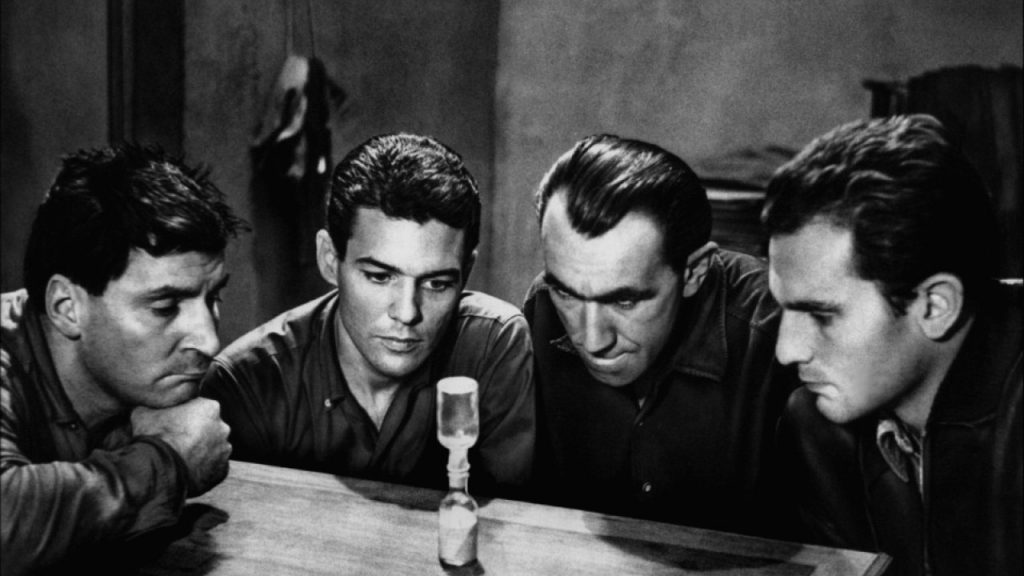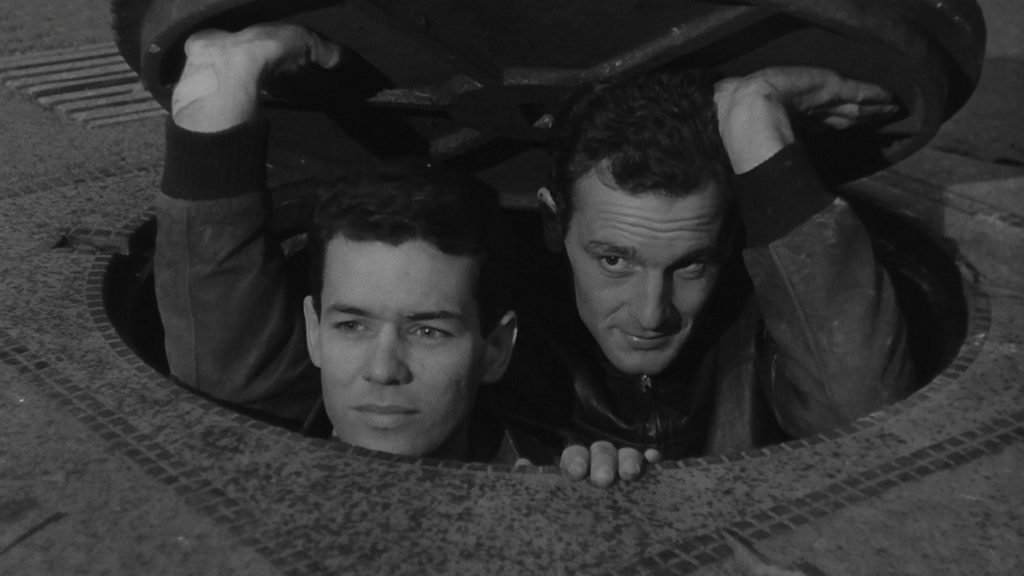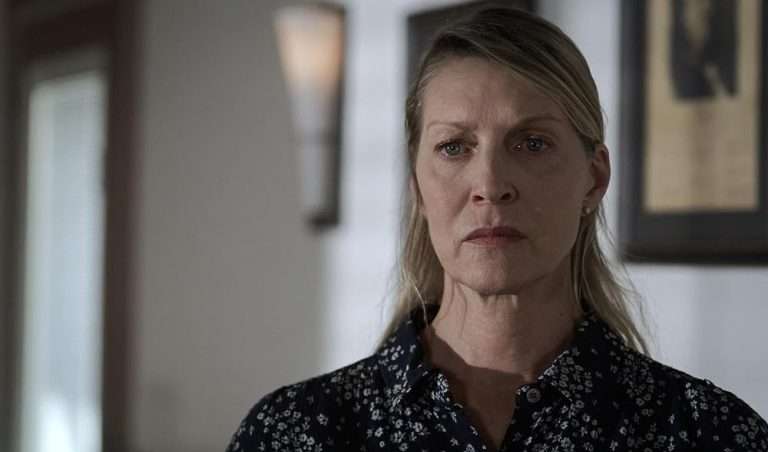The 4-odd minutes long shot of the ground of a prison cell beneath the floorboards being pummeled at till it breaks and gives way to a hole leading to an underground chamber, in Jacques Becker’s Le Trou (1960), is one of the great metaphysical moments in all of cinema. The breakthrough is not shown as the culmination of twenty hits every day over the course of six months but a single effort in a single take in a single go that establishes the fortitude of the five captive men we are to witness in the film. Here, every hit is imbued with a spiritual sense of release to it, as if they embody the phrase ‘throwing shackles off’. Yet, for an act requiring such exertion and with such a heightened sense of risk, it is only the first part of a plan labyrinthine in its complexity.
This physical nature of ‘Le Trou’ is the essence of its message, though not limited to it. The frame of the aforementioned action shows the changing hands of the men as they strike the ground and with the gradual shattering of it, the bowl that is used to put the rubbish in. The tunnel that they are to dig, deep in the prison’s netherworld, is where the entirety of their physique comes into the foreground, the deed that actually finishes their escape plan.
Related to Le Trou (1960): 10 Films to Watch If You Love The Shawshank Redemption
This act of escape is one that takes both brawn and brain, with a dearth of either being to its detriment. In light of that, we see the smallest objects being manipulated to create some relevant utility. It can be a piece of glass that is used as a makeshift periscope or the joint of a foldable bed that when placed under a fluffed up blanket and pulled through a string attached to the adjacent fellow’s leg creates the impression of someone actually shaking their leg underneath the blanket. Another ingenious usage of the tools available in the creation of an hourglass, or half-hourglass, is to be used for keeping a check on the amount of time it is taking the nightly duo of workers to make their tunnel.
Through such strategic and economic exploitation of their surroundings, the five prisoners in ‘Le Trou’ embody a distinctive idea and one extremely specific to its genre. It is the idea that incarcerated individuals when acting on their basic human instinct of wanting to escape, have only one major enemy – the prison itself. The space, the bricks on the walls, the fragile pieces of wood that might give them away, the serpentine hallways to be traversed, the dust that needs to be cleaned to avoid suspicion – these are the real enemies, the inanimate ingredients that constitute the space itself. For the five men attempting to escape, it is essential that they understand their surroundings in their entirety to avoid the slightest mistimed noise or wrong choice of paths. It is, to put it plainly, an elemental film that constructs its space meticulously to ensure our comprehension of its gradual disintegration.
This is where the American prison drama in general becomes a suspect in its depiction of custody. The hallowed turf that ‘The Shawshank Redemption’ occupies in the genre makes it in many regards, the quintessential film of its genre. Yet it hardly seems to understand the nature of captivity outside a Romantic look at the nature of rebellion innate to all sentient beings when it is deprived of its liberty.
The major problem is twofold, with the primary one being the character of the prison warden. In these films, the warden is a demonic incarnation, an utterly inhuman individual bent on exerting at every step, the nature of their power which in worst-case scenarios turns them into judge, jury, and executioner, denying their subjects the least bit of human dignity. The character has become a trope and is the most obvious antagonist in every film set in such internments. The wriest subversion of it is in an episode of Seinfeld where George Costanza visits a women’s prison and addresses the administrator there as ‘Warden’, much to her dismay who corrects him by asking him to simply call her by her name.
Related to Le Trou (1960): Lookback At Bresson: Man Escaped (1956)
The rowdy nature of inmates, their conflicts from which to gain protection they end up forming ‘gangs’ is what the warden keeps in check, which eventually makes these uneasy alliances team up in their disdain. Effectively, what this trope has done, whose culmination lies in “The Shawshank Redemption” is create this idea that the prison is a sovereign space, one that exists free from the laws that govern the outside world and by turn is both, the Wild West and an English boarding school.
Herein lies the problem because prison is a place of enforcement of justice and exists as the rehabilitation space in the judicial domain. It is by no means an autonomous institution but one that works entirely because of the existence of the justice system. The warden character therefore completely negates this idea as it always exists as the enemy, which is hardly so. It is the judicial system that is the nemesis of the convict for the carriage or miscarriage of justice is what places them there, not the warden whose job is entirely limited within the four walls of the prison and ensuring its smooth administration. It’s akin to a character in a crime film who seeks revenge against the mob for killing their family and is satisfied with killing the henchmen who committed the murder.
The creation of this character of the warden and its subsequent vilification creates a poor narrative for the escape. It means that the limits these wardens and their cronies push the convicts to is what makes them want to escape, or at least expedites their desire to, not the basic human instinct of wanting to do so. It’s not a problem with ‘The Shawshank Redemption’ alone but can be found as far back as the character of the sadistic Capt. Munsey, who wishes to become warden by replacing the present one in the brutally realistic Dassin’s ‘Brute Force’. Compared to that, in ‘Le Trou’, the prison staff is not confrontational at all, carrying out their duties in a near-mechanical fashion, which inadvertently heightens the human elements of the prisoners. The warden in it takes a liking to Gaspard for his good behavior and the block chief even allows the main characters to have their go at a couple of thieving plumbers.
In the American iteration, it is also important to note that the crimes for which individuals are sentenced have little to no meaning, which is again prominent in “The Shawshank Redemption”. This highlights the autonomous view of the prison. It is one of the more benevolent faults since it allows the inmates to be seen as human beings and not simply criminals but again can distract from the nature of their penalty.
Also Read: 10 Great Movies About Making A Fresh Start
In ‘Le Trou’, right, in the beginning, it is established that the men plan to escape as they’re afraid of the prolonged sentences they might get in their trials. In one of the early scenes, when the original four inhabitants of the cell that Gaspard is moved into want to understand his reliability, they ask him about his crime. His narration of it both ties into a class conflict that apparently exists within the French judiciary and is instrumental in the film’s conclusion. The other characters are afraid that the most fortunate among them might get a ten-year sentence. It isn’t a diabolical figure governing the setting but the law itself that they fear, it is the prospects that being incarcerated divests them off and the time they would lose subsequently from their lives, or even life itself.
“The Shawshank Redemption” is a good film, a look at human endurance as well as the blessed and damned nature of hope. But it also is a culmination of this subgenre of drama’s worst instincts and therefore the lack of their redressal makes them all the more glaring in it. Becker, with Le Trou (1960) is said to have bridged poetic realism with the Nouvelle Vague yet historicity aside, it is a film that seems to prophesize the shortcomings of its genre and address them right away, from the trope of the warden to the idea of prison as punishment. What it understands, which is all it needed to have been yet transcending, is that the essence of the process and success of a prison break is not an act of rebellion against a singular authoritarian figure but a triumph of the cornered human spirit.






![[Watch] “Article 15” Trailer which asks the people to follow the Constitution](https://79468c92.delivery.rocketcdn.me/wp-content/uploads/2019/05/Article-15-Trailer1-768x322.jpg)


